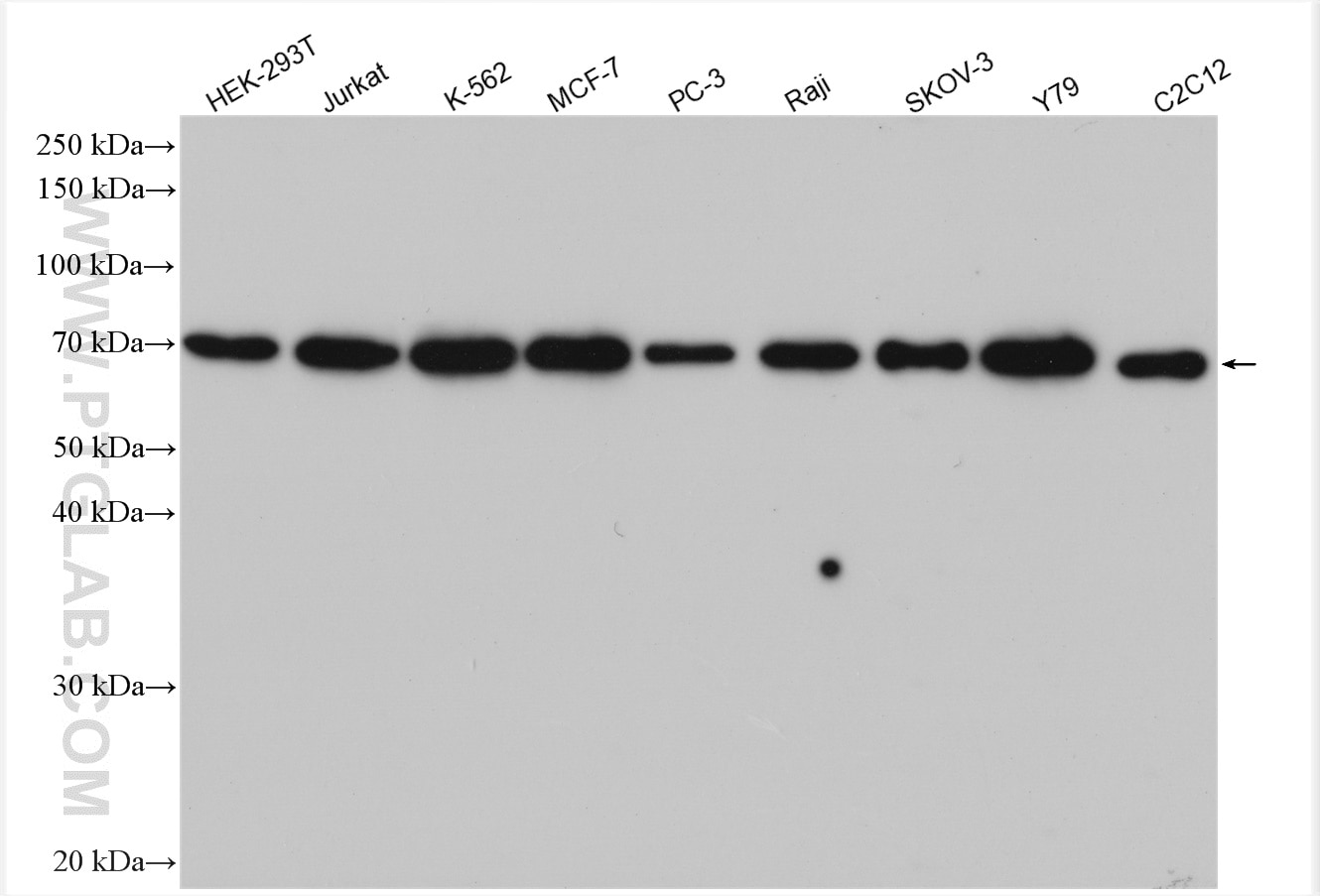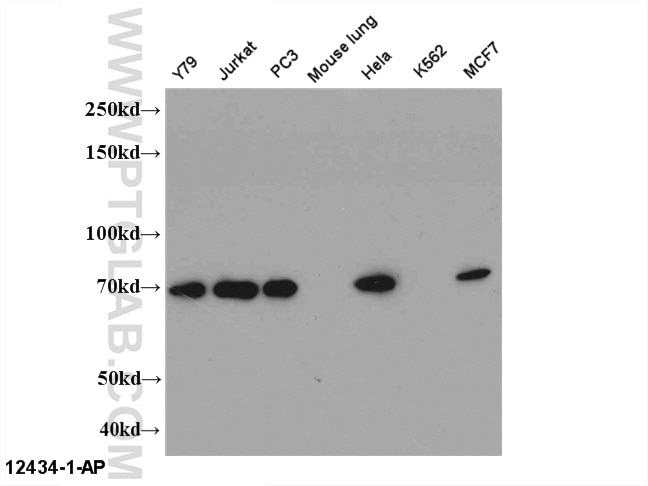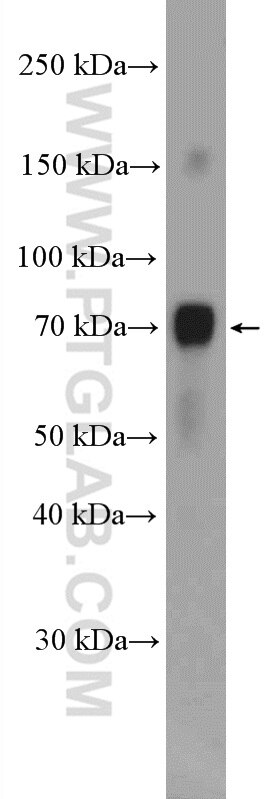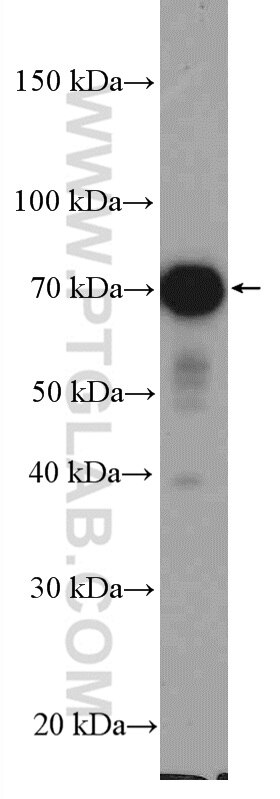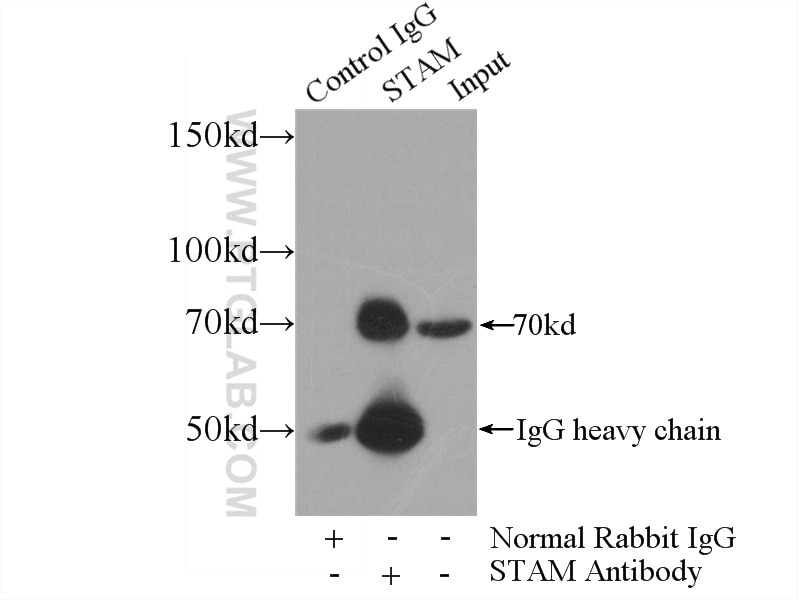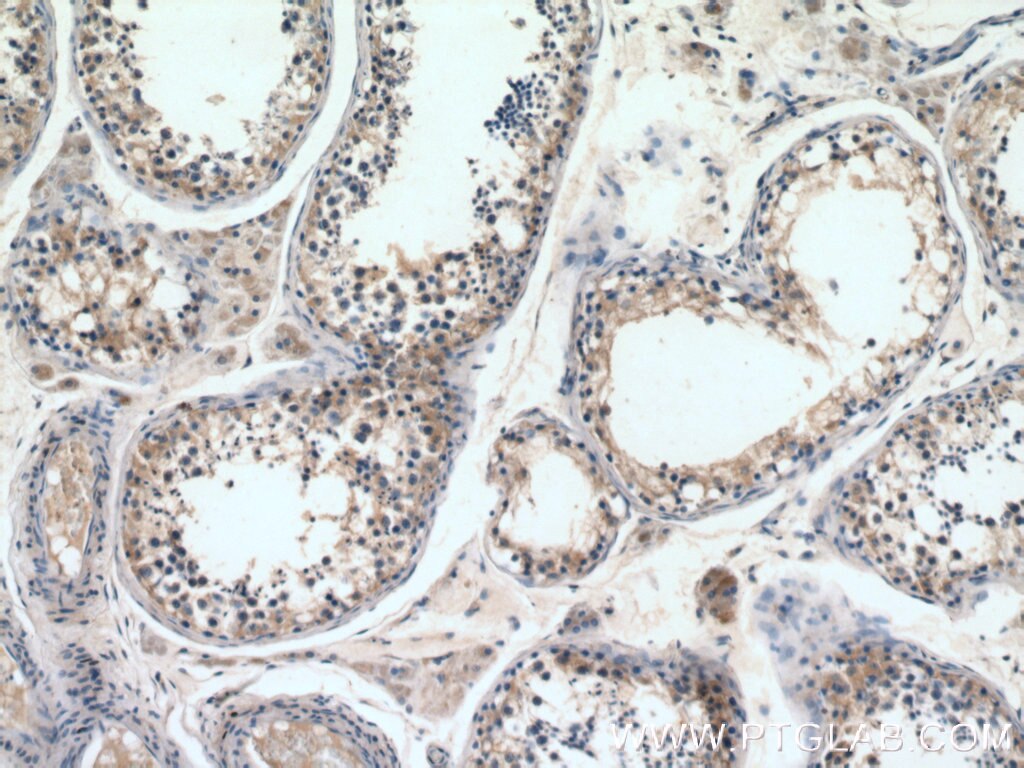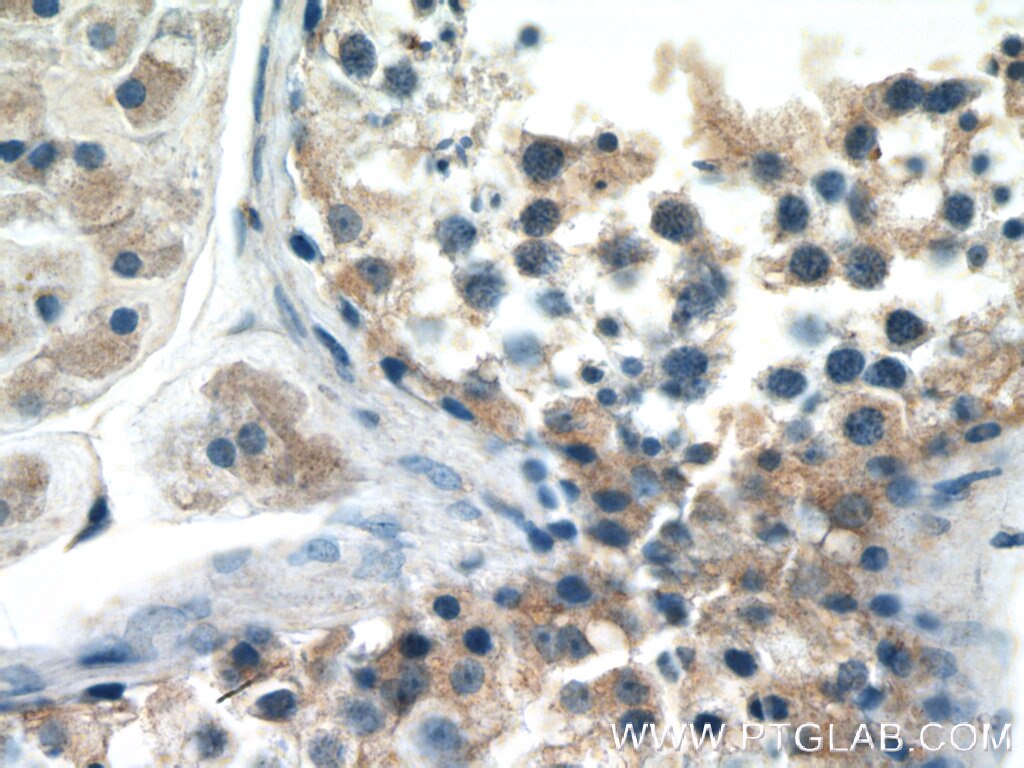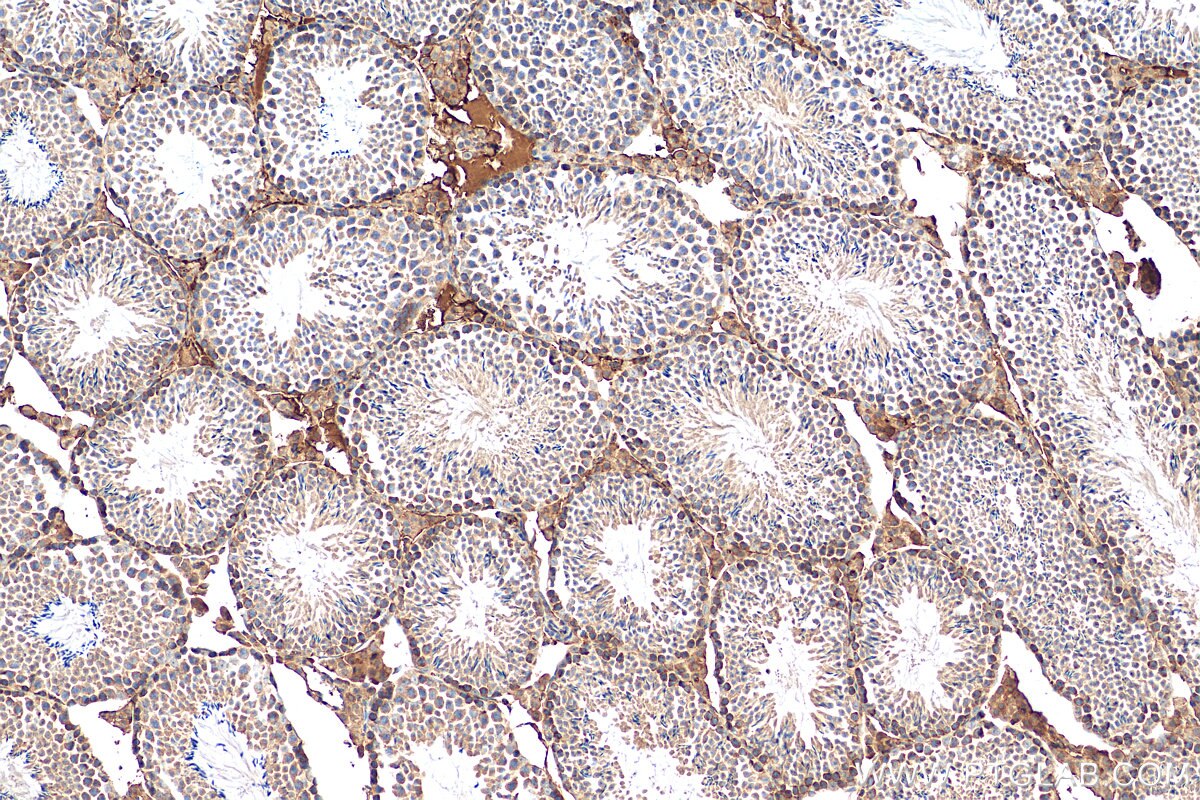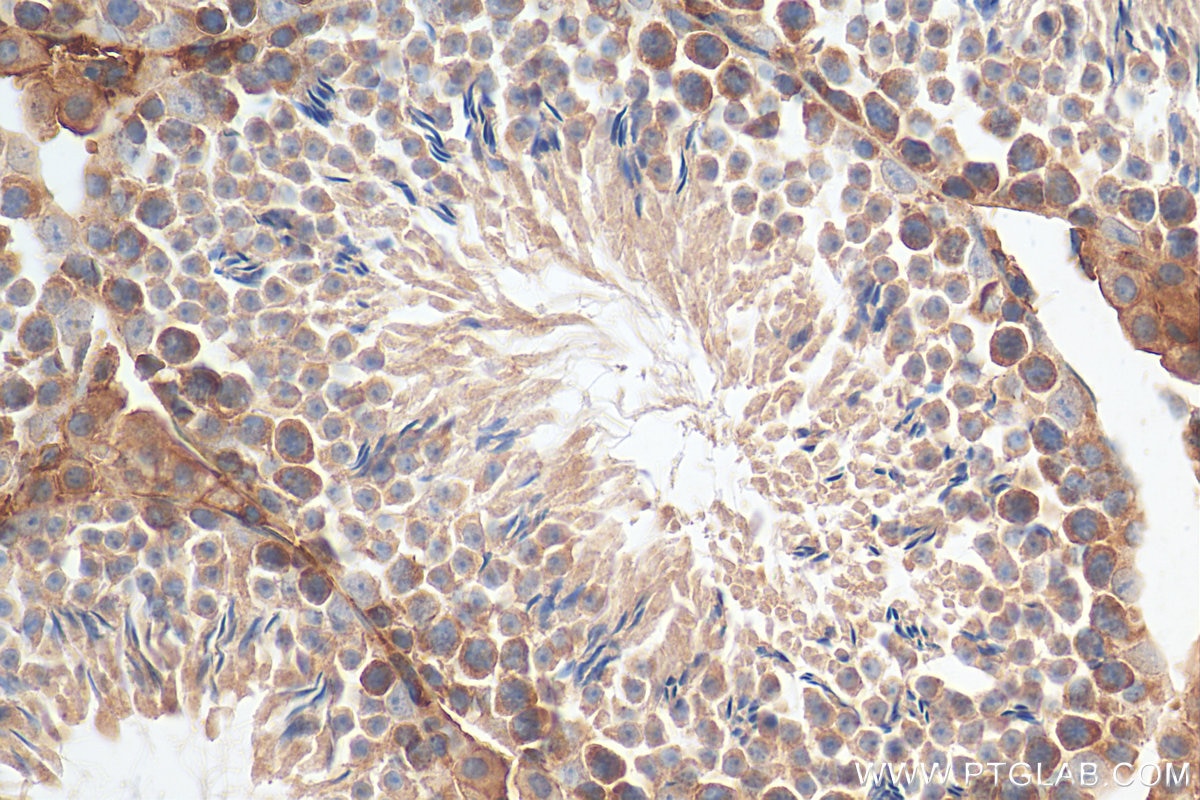Tested Applications
| Positive WB detected in | HEK-293T cells, Multi-cells, mouse brain tissue, Y79 cells, Jurkat cells, K-562 cells, MCF-7 cells, PC-3 cells, Raji cells, SKOV-3 cells, C2C12 cells |
| Positive IP detected in | PC-3 cells |
| Positive IHC detected in | human testis tissue, mouse testis tissue Note: suggested antigen retrieval with TE buffer pH 9.0; (*) Alternatively, antigen retrieval may be performed with citrate buffer pH 6.0 |
| Positive IF/ICC detected in | HepG2 cells |
Recommended dilution
| Application | Dilution |
|---|---|
| Western Blot (WB) | WB : 1:2000-1:16000 |
| Immunoprecipitation (IP) | IP : 0.5-4.0 ug for 1.0-3.0 mg of total protein lysate |
| Immunohistochemistry (IHC) | IHC : 1:50-1:500 |
| Immunofluorescence (IF)/ICC | IF/ICC : 1:50-1:500 |
| It is recommended that this reagent should be titrated in each testing system to obtain optimal results. | |
| Sample-dependent, Check data in validation data gallery. | |
Published Applications
| KD/KO | See 5 publications below |
| WB | See 17 publications below |
| IF | See 8 publications below |
| CoIP | See 1 publications below |
Product Information
12434-1-AP targets STAM in WB, IHC, IF/ICC, IP, CoIP, ELISA applications and shows reactivity with human, mouse, rat samples.
| Tested Reactivity | human, mouse, rat |
| Cited Reactivity | human, mouse, monkey |
| Host / Isotype | Rabbit / IgG |
| Class | Polyclonal |
| Type | Antibody |
| Immunogen |
CatNo: Ag3112 Product name: Recombinant human STAM protein Source: e coli.-derived, PGEX-4T Tag: GST Domain: 54-403 aa of BC030586 Sequence: VNHKDPHVAMQALTLLGACVSNCGKIFHLEVCSRDFASEVSNVLNKGHPKVCEKLKALMVEWTDEFKNDPQLSLISAMIKNLKEQGVTFPAIGSQAAEQAKASPALVAKDPGTVANKKEEEDLAKAIELSLKEQRQQSTTLSTLYPSTSSLLTNHQHEGRKVRAIYDFEAAEDNELTFKAGEIITVLDDSDPNWWKGETHQGIGLFPSNFVTAYLTAEPEMIKTEKKTVQFSDDVQVETIEPEPEPAFIDEDKMDQLLQMLQSTDPSDDQPDLPELLHLEAMCHQMGPLIDEKLEDIDRKHSELSELNVKVMEALSLYTKLMNEDPMYSMYAKLQNQPGSGPTIRKPSPS Predict reactive species |
| Full Name | signal transducing adaptor molecule (SH3 domain and ITAM motif) 1 |
| Calculated Molecular Weight | 59 kDa |
| Observed Molecular Weight | 70 kDa |
| GenBank Accession Number | BC030586 |
| Gene Symbol | STAM |
| Gene ID (NCBI) | 8027 |
| RRID | AB_2199965 |
| Conjugate | Unconjugated |
| Form | Liquid |
| Purification Method | Antigen affinity purification |
| UNIPROT ID | Q92783 |
| Storage Buffer | PBS with 0.02% sodium azide and 50% glycerol, pH 7.3. |
| Storage Conditions | Store at -20°C. Stable for one year after shipment. Aliquoting is unnecessary for -20oC storage. 20ul sizes contain 0.1% BSA. |
Background Information
STAM, also named as STAM1, belongs to the STAM family. It is involved in intracellular signal transduction mediated by cytokines and growth factors. Upon IL-2 and GM-CSL stimulation, it plays a role in signaling leading to DNA synthesis and MYC induction. STAM may also play a role in T-cell development. It is involved in down-regulation of receptor tyrosine kinase via multivesicular body (MVBs). Together with HRS, STAM forms ESCRT-0. STAM was originally identified as an adaptor protein involved in cytokine signaling.(PMID:20505072)
Protocols
| Product Specific Protocols | |
|---|---|
| IF protocol for STAM antibody 12434-1-AP | Download protocol |
| IHC protocol for STAM antibody 12434-1-AP | Download protocol |
| IP protocol for STAM antibody 12434-1-AP | Download protocol |
| WB protocol for STAM antibody 12434-1-AP | Download protocol |
| Standard Protocols | |
|---|---|
| Click here to view our Standard Protocols |
Publications
| Species | Application | Title |
|---|---|---|
Nat Cell Biol Endosomal membrane tension regulates ESCRT-III-dependent intra-lumenal vesicle formation. | ||
Mol Cell Systematically defining selective autophagy receptor-specific cargo using autophagosome content profiling. | ||
Development Identification of STAM1 as a novel effector of ventral projection of spinal motor neurons. |

